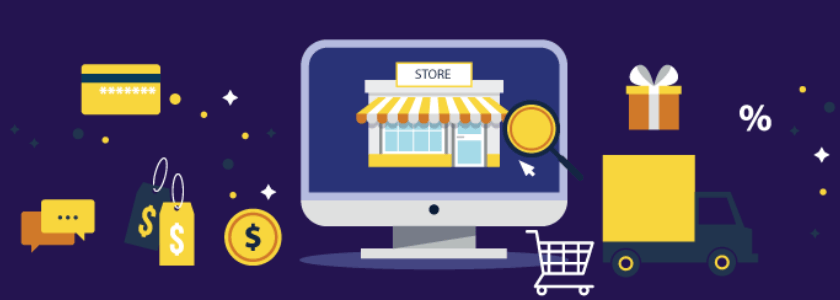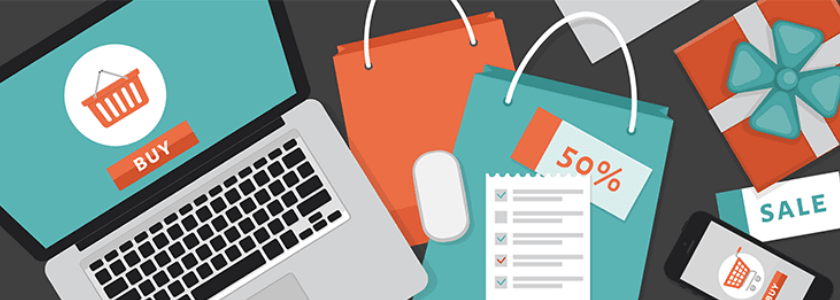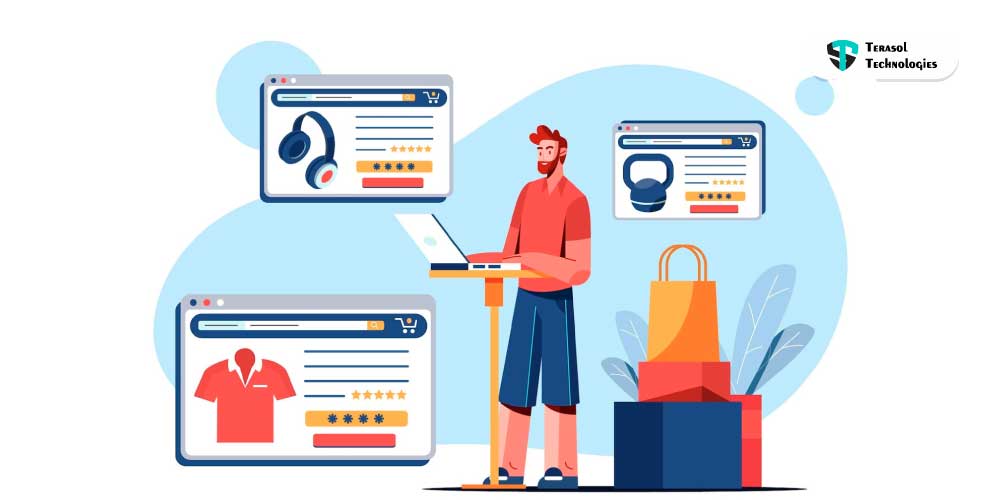Top 10 Must-Have E-commerce Features to Make Your E-Store Thrive
Starting an online store is only the first step. The e-commerce industry is expanding faster than ever before. Once you've gotten the hang of marketing your business and processing orders, it's time to think about adding advanced e-commerce features to sell more products and enhance your revenues.
Offering high-quality products isn't enough to keep an E-Commerce store afloat. Various other aspects come into play as well. You must have an appealing, user-friendly, SEO-rich website that is also adept at marketing itself. All of this is available in the form of powerful e-commerce store features and tools for your website. The hard thing is how competent you and your hired software development company is at using them, and yes, you should understand how they function!
There is no specific secret to their success. Those e-commerce sites do things that everyone else does, but they uniquely do them.
They start with the foundations, such as user experience (UX), user interface (UI), fast and dependable hosting, security, and so on, and then they work on features that will make their website simple, quick, safe, and visually appealing. The features provided by the website, and both the customer and the website owner also make a huge difference.
As a business owner, you must have the tools to manage your website and ensure that the administrative features are compatible with your business processes. For example, if you offer payment terms to your customers, make sure the platform you're using allows you to set a credit limit for them. Before delving into an e-Commerce project, thoroughly consider the eCommerce features required; else, you'll be kicking yourself afterward!
Some e-commerce businesses are barely surviving while others are making large profits daily.
So, if you want to detect loopholes in your business, you should go through our e-commerce features checklist! This article will go through some of the essential e-commerce features to make your e-store thrive across the globe.

Here are 10 Advanced E-Commerce Features
Going beyond the basics and adding advanced features for store optimization will help you improve the experience of your customers and sell more products. Here are seven advanced e-commerce features to think about incorporating into your e-store.
1. Options for product search, filtering, and comparison
You may believe that your website is the greatest user-friendly destination ever, yet a first-time visitor may associate it with Babylon. Users may become disappointed if there is no option for searching. Even though the layout is unclear at first, a search option will typically allow the tenacious user to manually seek their desired results.
Even if you're only displaying a few products or services on your website, it's critical to provide the visitor with the opportunity to filter them based on relevant criteria by category. The purpose of filtering is to allow a user to get to their intended query faster, therefore expediting the checkout process. You can achieve this manually by working with web application development companies.
Consider adding filters for toggling between several product categories, sorting by price, identifying product quality, and sorting based on social validation (popularity). Include a comparison feature if your site offers several products/services or tiers of offerings.
2. Optimized Shopping Cart

The shopping cart on your e-commerce site is not something that should be decided during setup and then forgotten about. A shopping cart is an important feature to have on your e-commerce site. Customers' chosen products are added to this location before they proceed with the checkout procedure.
Managing a high-performing cart necessitates ongoing testing, adjusting, and re-work to remain current with consumer wants and market developments. Your cart should also be optimized in terms of flow, layout, and information displayed.
In terms of flow, your shopping cart should have just the perfect number of steps so that visitors see the procedure as simple yet professional. Some sectors benefit more from three-step shopping carts, while others benefit more from a two-step flow.
3. Search Engine Optimization
The majority of online traffic may be divided into two categories:
Referral traffic — individuals who visit your website via referral links, such as those found in social media posts, articles, or advertisements.
Organic traffic is defined as visitors who arrive at your website from relevant search results.
To expand your business, you must ensure that both types of traffic are directed to your e-commerce platform. Organic traffic will necessitate code optimization and content promotion.
Page optimization for SEO is critical for your online activities. Like, while developing your front-end, you can continue to use a Shopify-based e-commerce backend solution.
📖Get valuable strategies for your eStore in just a few clicks. Grab your free eBook Now!
4. Integration with Social Media and Blog Sites
Some content management systems can be linked to social media platforms. It makes it easier for firms to share items, information, and photographs with their audience. It can eventually lead to increased consumer involvement and sales for the online store.
You should also have an email marketing feature built into your e-Commerce site or store's backend.
Your e-commerce site can have a separate section on your website where all of your blogs and articles. When it comes to appeasing both the search engine and the customers, integration is an important marketing tactic.
5. Native Mobile Application
Investing in Progressive Site Apps (PWAs) or responsive web design may be sufficient. A native mobile app, on the other hand, might be a smart solution for a bigger amount of traffic. Design your e-commerce site user-friendly.
Mobile apps, for example, can be used to optimize content for mobile devices, particularly product photographs, and descriptions.
Here are a few pointers to keep in mind when it comes to improving your online checkout process for mobile users:
- Check to see if your form fields are large enough to type on smaller displays.
- Check that form fields activate the correct keyboard.
- Don't enquire about things that aren't necessary.
- Make your buttons and calls-to-action larger.
6. UX Audit of the Shopping Path
Although a UX audit is not a feature, it enables improved decision-making when developing or altering a buyer's journey. This type of UX audit shopping can be based on expert analysis, moderated stationary testing, online tests, heatmap analysis, and so on.
The idea is to collect useful data about how visitors interact with your online store and use it to improve their buying experience. Among the advantages are:
- Increasing the average shopper's shopping basket.
- Increasing average conversions from the majority of sources.
- Lowering the average cost of customer acquisition.
7. Product demonstrations in video or 3D
Finally, think about including video and 3D product demos in your store. One of the most significant disadvantages of internet shopping is the inability to view or touch the merchandise in person.
By including video or 3D product demos or by using AR/VR tech, you can bridge this gap and help your buyers visualize what they're purchasing.
8. Promotional and Discount Code Generators

It is one of the most useful tools for your eCommerce company. If you have any special offers or reductions, these should be displayed alongside the product price. You can use the standard practice of removing the original price and displaying the discounted pricing. You can also show the savings as a percentage to help users realize how much money they are saving.
9. Advance and Secure Payment Options
Have you experienced a situation where you have to fill in a whole lot of information while buying, and then you abandon it?
I have done this many types. It is tiring, no matter how willing I am to buy the product.
Cart abandonment is one of the challenges wreaking havoc on online sales. One option to increase this measure is to implement seamless payments, which include conventional methods such as PayPal-like solutions, credit cards, and so on. The simpler and shorter the payment stage, the lower the likelihood of cart abandonment.
Mobile payments should also be prioritized when creating or improving this channel. If your website currently does not handle multiple payments, you already know what your next critical site implementation must be.
Another issue is one of trust. Online retailers and payment systems are vulnerable to cyber-attacks, which result in fraud and data leaks that impact customers. As a result, one of your primary considerations should be the security of your web and mobile payments.
10. Include a CTA and a contact page
By putting a clear call-to-action button, you can move your visitors' attention away from choice fatigue and confusion and toward the important material based on your demands. Place the CTA in a prominent location on your website and choose a fill color that contrasts with the background.
Although it may appear to be a no-brainer, establishing a web page with contact information for your team is expected by all clients.
Shift Your Retail Business into Higher Gear with IT Solutions.
Conclusion
And there you have it, our comprehensive top ten list of everything required for an e-commerce site in 2022 and beyond. Ensuring that these needs are followed may increase your bottom line over time and will undoubtedly improve your visitors' experience, causing them to return for more.
Allow us to Deliver E-Commerce Features to your Store
User needs and available technologies may change, but the core concept for many e-commerce websites remains the same – to provide a decent UX, present products in a compelling style, and drive and convert relevant visitors from various channels.
Get in touch with us, with cutting-edge solutions, we can assist you in adapting to these changing demands and gaining a competitive advantage. Let us know about your concept, and we will create your e-commerce features.


